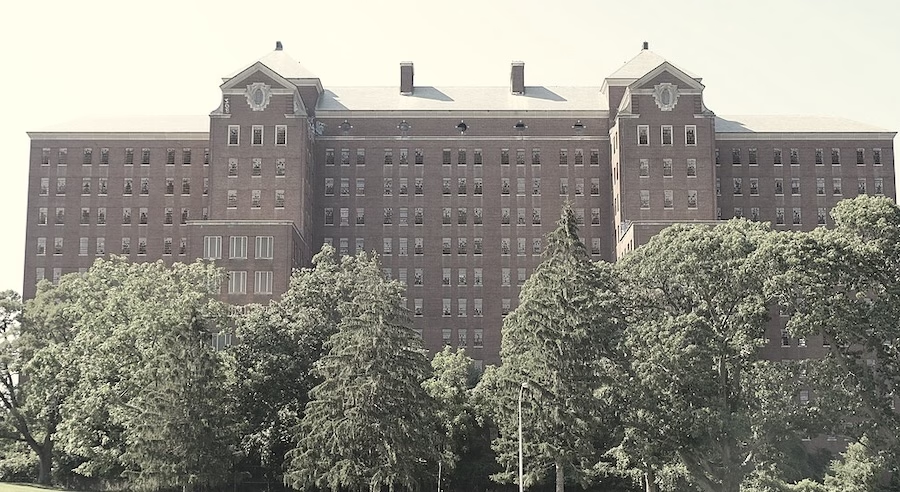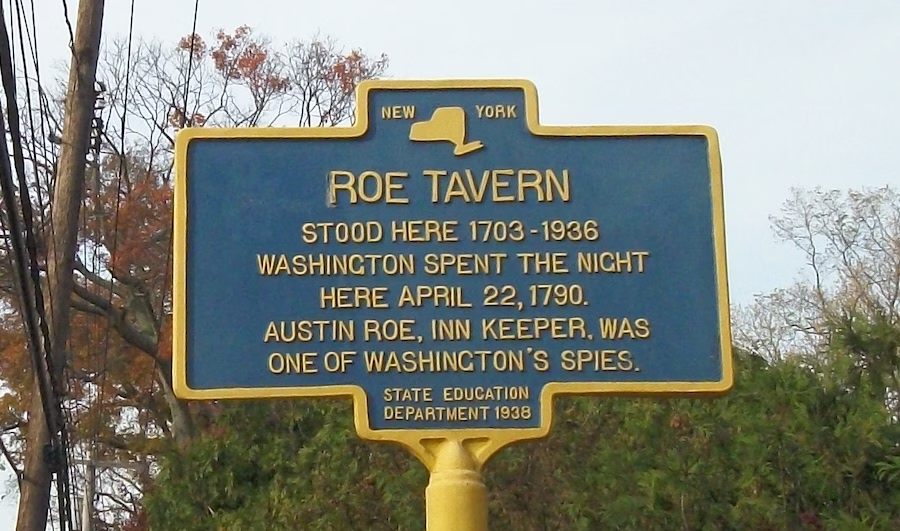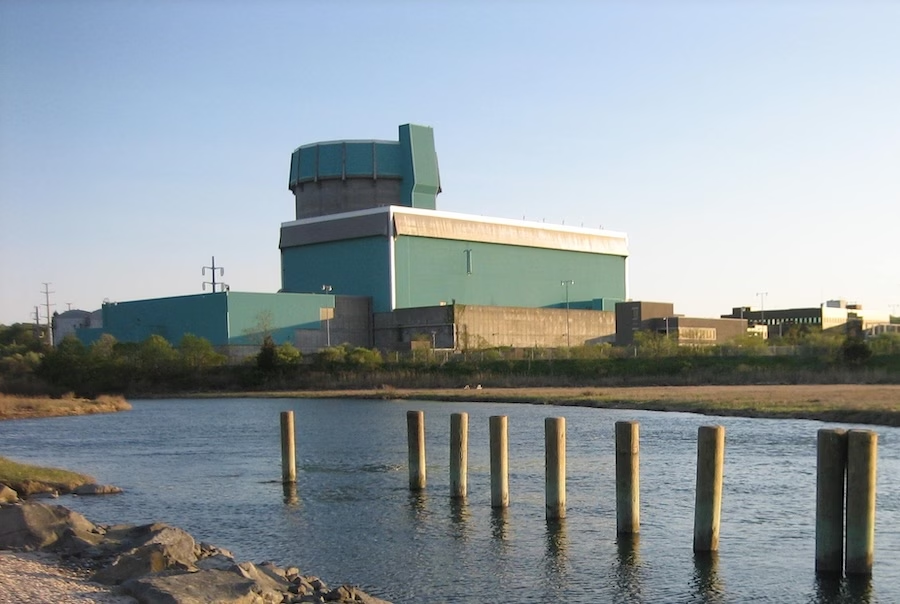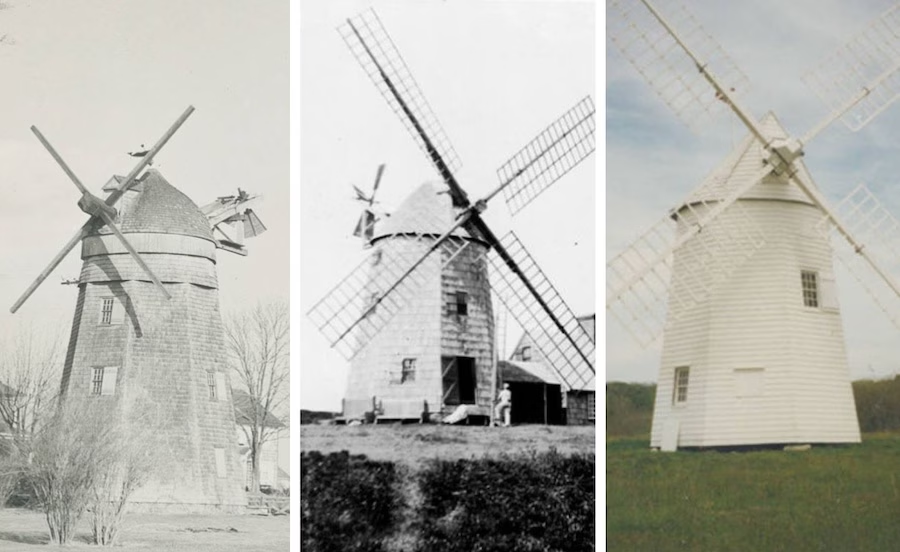Did you know the hamlet of Kings Park owes its name to a psychiatric hospital? Kings Park Psychiatric Center, originally known as the Kings County Asylum, was established in 1885 on Long Island’s picturesque shores. It began as a farm colony, where patients tended crops and livestock as part of their therapy—an innovative treatment method of its time.
Nestled on the serene shores of the Long Island Sound, Kings Park Psychiatric Center wasn’t just a hospital—it was a community, a place of innovation, and, eventually, a site of mystery and legend. From its beginnings as a farm colony in the late 19th century to its controversial treatments and eventual abandonment, the center’s story intertwines with Long Island history in unexpected ways.
Origins of a Community Landmark
In 1885, officials from Brooklyn’s Kings County faced an urgent problem: overcrowding in their mental health facilities. Seeking a solution, they acquired 800 acres of scenic land in a Long Island area then called Indian Head. On this land, they established the Kings County Asylum, a progressive farm colony where patients grew crops and tended animals as therapy.
The asylum wasn’t just a hospital—it shaped the area around it. By 1895, the state took over the facility, renaming it Kings Park State Hospital. The hamlet surrounding the hospital adopted the name “Kings Park,” creating a lasting legacy for the institution.
A City Within a Hospital
As the years went on, Kings Park Psychiatric Center expanded significantly. By the 1930s, it had grown into a self-sustaining community with over 150 buildings. Patients and staff lived and worked on the grounds, which featured farmland, a butcher shop, a tailor, and even a private railroad spur for supplies.
At its peak in 1954, Kings Park housed over 9,000 patients and employed thousands of staff, many of whom lived locally. The campus also included two marinas—one private and another for hospital employees and their families. This thriving mini-city helped shape the surrounding community and provided jobs for Long Islanders for decades.
Iconic Architecture: Building 93
One of the most recognizable structures on the grounds is Building 93, a 13-story neoclassical giant built in 1939 as part of a Works Progress Administration project during the Great Depression. Initially an infirmary for elderly and chronically ill patients, Building 93 housed over 1,200 people at its height. Today, its imposing silhouette serves as a landmark for boaters on the Sound—and as a magnet for urban explorers.
The Dark Side of Psychiatric Care
Kings Park wasn’t without controversy. Early reports criticized the hospital for poor living conditions and inadequate facilities. In the mid-20th century, it became a center for then-common but now-discredited treatments, such as prefrontal lobotomies and electroshock therapy. These practices were largely replaced by new medications, such as Thorazine, which contributed to a decline in patient numbers.
Even after these treatments ended, the hospital struggled with issues like understaffing and safety violations. In 1981, it briefly lost accreditation due to insufficient fire escapes and poor patient record-keeping.
Closure and Redevelopment
By the 1990s, advancements in psychiatric care and new outpatient treatments drastically reduced the need for large institutions. Kings Park Psychiatric Center officially closed in 1996 after 111 years of operation. Its last patients were transferred to Pilgrim Psychiatric Center.
Efforts to repurpose the sprawling campus began almost immediately. In 2000, a 153-acre portion of the property became Nissequogue River State Park. Over the years, additional land, including some of the hospital’s abandoned buildings, was added to the park. However, redevelopment has been slow, hampered by the challenges of removing asbestos and other hazardous materials from the old structures.
Trespassers, Ghost Hunters, and Urban Legends
Despite its closure, Kings Park Psychiatric Center has remained in the public eye, thanks to its reputation as one of Long Island’s most haunted locations. Tales of ghostly encounters and eerie occurrences have attracted amateur ghost hunters and thrill-seekers, especially around Halloween. Security has been tightened in recent years to deter trespassers, but that hasn’t stopped the curious from attempting to explore the site’s crumbling tunnels and graffiti-covered buildings.
The abandoned buildings are not just spooky—they’re dangerous. Hazards like collapsing structures, broken glass, and toxic materials make entering them illegal and life-threatening. Still, the stories of hauntings and urban exploration continue to fuel the mystique of Kings Park.
A Lasting Legacy
Today, Kings Park Psychiatric Center is a mix of history, legend, and ongoing transformation. With much of its land preserved as parkland, visitors can walk the trails of Nissequogue River State Park and imagine the bustling community that once thrived there. Whether you’re drawn by its historical significance or its ghostly lore, Kings Park remains one of Long Island’s most fascinating landmarks.
Photo: Antony-22, CC BY-SA 4.0 <https://creativecommons.org/licenses/by-sa/4.0>, via Wikimedia Commons.




